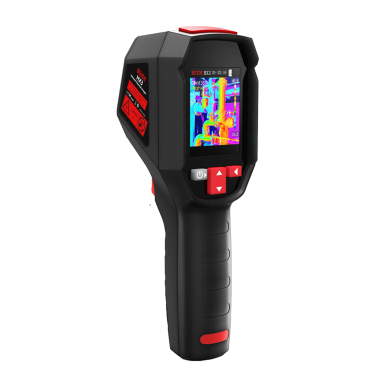Infrared Thermometer: Essential Tool for Accurate Temperature Measurement
April 25, 2025 | News | No Comments

# Infrared Thermometer: Essential Tool for Accurate Temperature Measurement
## What is an Infrared Thermometer?
An infrared thermometer is a non-contact temperature measurement device that detects infrared energy emitted by objects and converts it into a temperature reading. Unlike traditional thermometers that require physical contact, infrared thermometers allow users to measure temperature from a safe distance, making them ideal for various applications.
## How Does an Infrared Thermometer Work?
Infrared thermometers operate on the principle of detecting thermal radiation. Every object with a temperature above absolute zero emits infrared energy. The thermometer’s lens focuses this infrared light onto a detector called a thermopile, which converts the radiant energy into an electrical signal. This signal is then processed and displayed as a temperature reading on the device’s screen.
## Key Features of Infrared Thermometers
### Non-Contact Measurement
The most significant advantage of infrared thermometers is their ability to measure temperature without touching the object. This feature is particularly valuable when dealing with:
– Moving objects
– Hazardous materials
– Hard-to-reach surfaces
– Sanitary-sensitive environments
### Fast Response Time
Infrared thermometers provide instant readings, typically within seconds. This rapid response makes them perfect for:
– Industrial quality control
– Food safety inspections
– Medical applications
– HVAC system monitoring
### Adjustable Emissivity Settings
Many advanced infrared thermometers allow users to adjust the emissivity setting to account for different surface materials. This feature improves accuracy when measuring:
– Shiny metals
– Textured surfaces
– Transparent materials
– Various coatings
## Common Applications of Infrared Thermometers
### Medical Use
In healthcare settings, infrared thermometers (often called temporal artery thermometers) are widely used for:
– Fever screening
– Patient temperature monitoring
– Infection control measures
– Mass screening in public spaces
### Industrial Applications
Manufacturing and maintenance professionals rely on infrared thermometers for:
– Equipment condition monitoring
– Electrical system inspections
– Mechanical component analysis
– Process control verification
### Food Service and Safety
Restaurants and food processing facilities use infrared thermometers to:
– Check cooking temperatures
– Monitor food storage conditions
– Verify serving temperatures
– Ensure compliance with food safety regulations
## Choosing the Right Infrared Thermometer
When selecting an infrared thermometer, consider these important factors:
### Temperature Range
Different models offer varying measurement ranges. Choose one that covers your specific needs, whether it’s for:
– Body temperature (typically 32-42°C or 90-108°F)
– Industrial applications (often -50 to 1000°C or -58 to 1832°F)
– General purpose use (usually -30 to 300°C or -22 to 572°F)
### Distance-to-Spot Ratio
This specification indicates how close you need to be to the target for an accurate reading. Common ratios include:
– 1:1 (must be very close)
– 12:1 (can measure from a greater distance)
– 50:1 (for specialized long-range measurements)
### Accuracy Requirements
Consider the level of precision needed for your application:
– Medical use typically requires ±0.2°C accuracy
– Industrial applications may tolerate ±1°C or more
– Food service usually needs ±0.5°C precision
## Proper Use and Maintenance Tips
To ensure accurate measurements and long-term reliability:
– Keep the lens clean and free from scratches
– Store the thermometer in a protective case when not in use
– Avoid exposing the device to extreme temperatures
– Regularly calibrate according to manufacturer recommendations
– Use fresh batteries and replace them when needed
Keyword: infrared thermometer
Infrared thermometers have revolutionized temperature measurement across numerous industries. Their non-contact operation, speed, and versatility make them indispensable tools for professionals and consumers alike. By understanding their features, applications, and proper usage, you can select and utilize an infrared thermometer that perfectly meets your temperature measurement needs.